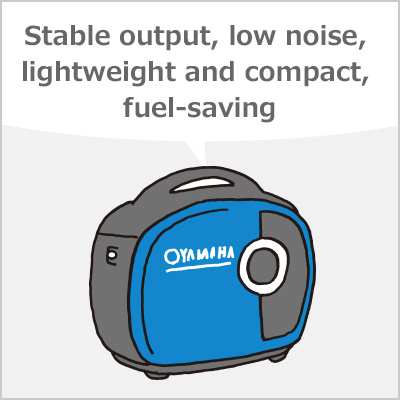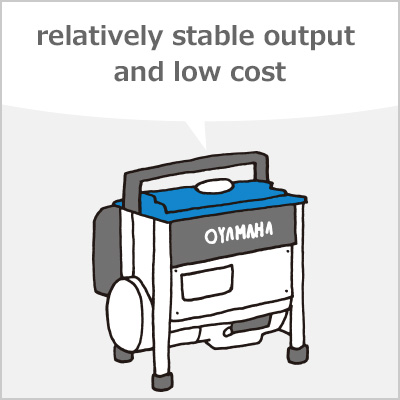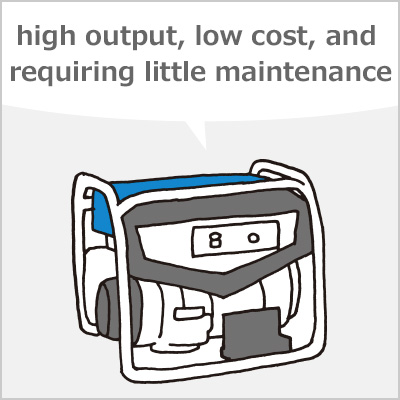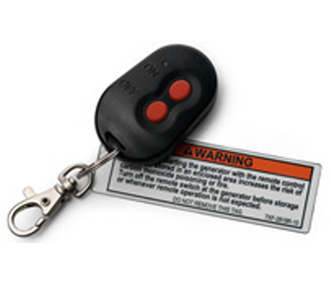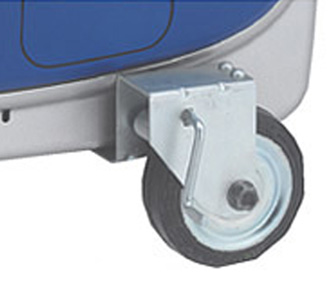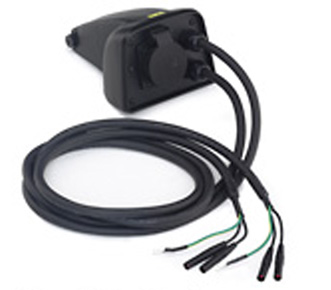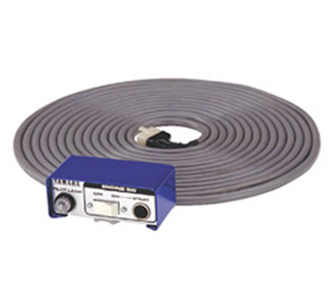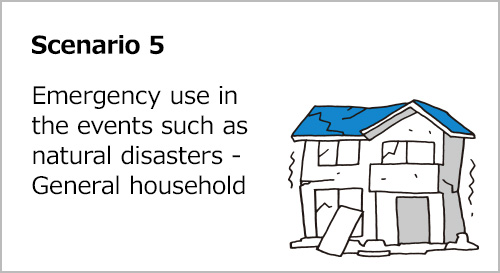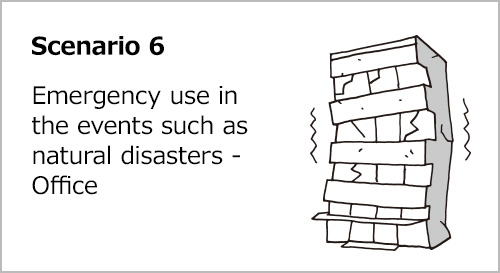How to choose a generator?
Introduction of selecting the proper generator.
STEP 1 The timing, location, and purpose of operating the generator.
First, the scenario and/or objective in which a generator is operated should be clearly identified to select the type of the generator that is most suitable for the scene and/or objective in question.
Example
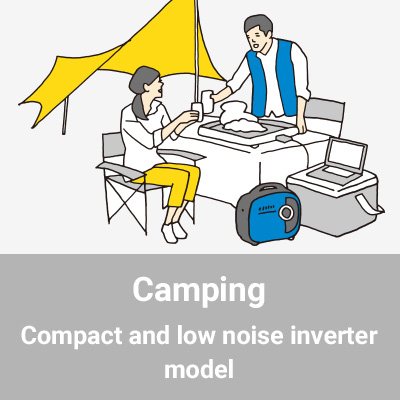
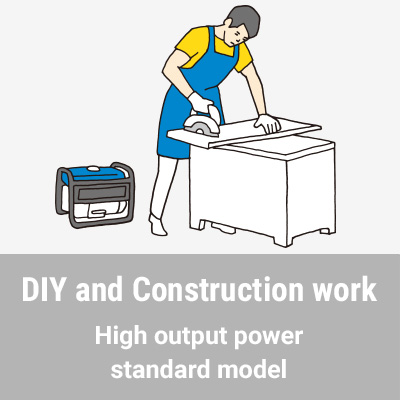
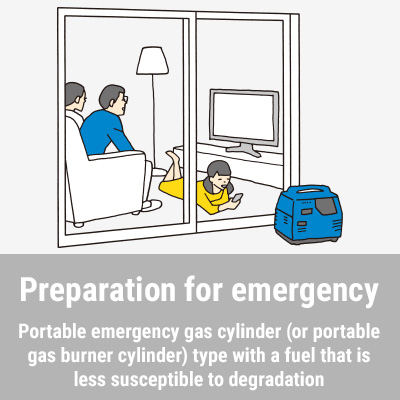
STEP 2 The power consumption and startup power of electrical equipment should be checked.
The power consumption and startup power of the electrical equipment that will be used should be checked. It should be noted that equipment may require startup power that exceeds the power consumption and that is three to four times the power indicated on the nameplate.
(Example)
Electrical product with a startup power identical to the power consumption
Examples include PCs, 37-inch TVs, and electric pots.
Electrical product with a startup power that is 1.1 to 2 times the power consumption
Examples include microwave ovens, household electrical fans, and electric circular saws.
Electrical product with a startup power that is 2.1 to 4 times the power consumption
Examples include household refrigerators, air conditioners, and mercury lamps.
| Electrical product | power consumption(W) | approximate startup power(W) |
|---|---|---|
| Notebook PC | 200W | 200W |
| 37-inch TV | 300W | 300W |
| Coffee maker | 650W | 650W |
| Electric pot | 1,000W | 1,000W |
| Electrical product | power consumption(W) | approximate startup power(W) |
|---|---|---|
| Halogen heater | 1,000W | 1,000W |
| Household rice cooker | 1,300W | 1,300W |
| Hot plate | 1,300W | 1,300W |
| Electrical product | power consumption(W) | approximate startup power(W) |
|---|---|---|
| Household electrical fan | 50W | 100W |
| Halogen light | 250W | 500W |
| Electric drill | 300W | 600W |
| Impact wrench | 500W | 1,000W |
| Electrical product | power consumption(W) | approximate startup power(W) |
|---|---|---|
| Electromotive circular saw | 600W | 1,200W |
| Microwave oven | 1,000W | 1,800W |
| Electric planer | 1,200W | 2,400W |
| Electric nailing machine | 1,500W | 3,000W |
| Electrical product | power consumption(W) | approximate startup power(W) |
|---|---|---|
| Household refrigerator (small) | 100W | 400W |
| Small cooler | 200W | 800W |
| Household refrigerator (large) | 250W | 1,000W |
| Electric lawn mower | 400W | 900W |
| Electrical product | power consumption(W) | approximate startup power(W) |
|---|---|---|
| Mercury lamp | 400W | 1,600W |
| Submersible pump | 500W | 2,000W |
| Air compressor | 750W | 3,000W |
STEP 3 Add the startup powers of all the electrical equipment that was used simultaneously, and select the generator that is most suitable for a given need
Adding the startup powers of electrical equipment that could be simultaneously used will help in determining the type of generator that can provide the required power. This is followed by comparing the total power with the rated output power shown in the catalogue. The rated output power (or simply “output”) is the power that the generator can stably generate, and it is denoted as “VA” in the unit.

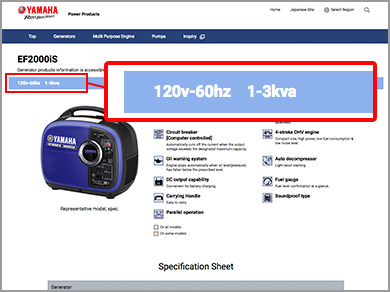
Watt (W) vs. Volt–Ampere (VA)
Both these units of measurement express the quantity of electricity consumed in a second, which is also known as electric power. However, they have different units, namely, W for power consumption and VA for rated output. That is, electric quantity consumed by electrical equipment is expressed as Watt (W), and electric quantity generated by a generator is expressed as Volt–Ampere (VA).
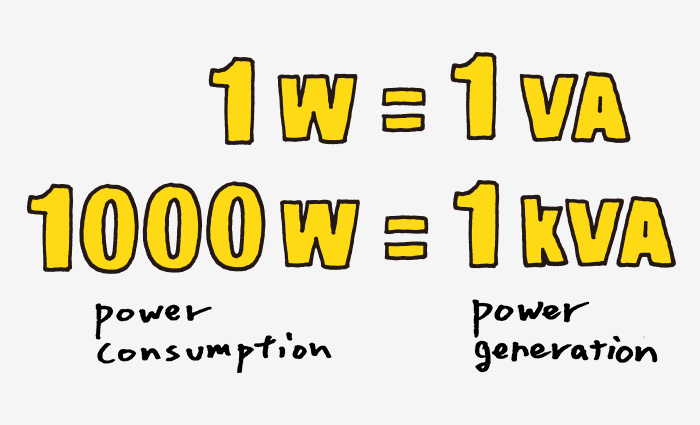
STEP 4 The generator is chosen from three types: “Inverter,” “FW,” and “Standard.”
Yamaha generators can roughly be classified into three configurations, i.e. "Inverter," "FW," and "Standard," each with different characteristics. The type will be selected to match the application situation. First, the Standard type adopts a simple structure, which is inexpensive and yields high output. The Inverter type provides high-quality electricity and can also be used safely in precision equipment such as a personal computer with a built-in microprocessor; it consumes low amounts of fuel and is compact. The FW type can be considered as a generator with intermediate characteristics; that is, it produces better-quality electricity than the Standard type and has a more reasonable price than the Inverter type.
The generator can be made more versatile by using relevant accessories.
The generator can become more versatile by using accessories including a special cord to allow parallel generator operations and canisters that enable easy generator transportation.
Points to be noted
Use the generator only after having read the instruction manual carefully.
